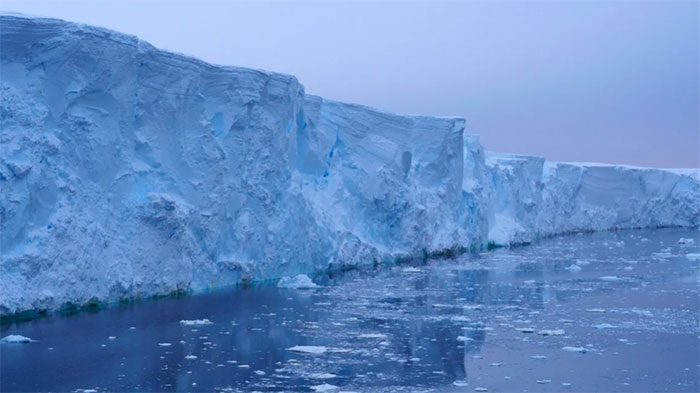A recent study by British scientists indicates that the Antarctic ice sheet is melting at a rate that contradicts predictions of sea-level rise made by scientific models.
According to a study published in the journal Nature Geoscience on June 25, researchers at the British Antarctic Survey discovered that warm seawater is seeping beneath the “grounding line” of the ice sheet, leading to a rapid melting phenomenon that could trigger a critical threshold (an irreversible level). The grounding line is the area where ice sheets meet the land, marking the point where ice separates from the land and begins to float.

Antarctic ice melting rapidly due to warming seawater. (Photo: CNN).
The study reveals that even a slight increase in ocean temperatures can have a significant impact on ice melt. As climate change heats the oceans, this process will accelerate.
Alex Bradley, a glaciologist and the lead author of the study, stated: “Glaciers are flowing faster into the ocean, in a process that has never been captured in any sea-level rise forecasting models.”
While the study indicates that the effects of melting ice will not be felt immediately, the world will witness rising sea levels accumulating over decades and centuries, threatening coastal communities worldwide.
The research does not provide a timeline for when we might reach this critical threshold, nor does it give specific figures on the potential sea-level rise. Previous data suggests that the amount of ice lost from Antarctica averages 150 billion tons per year, and the entire ice sheet in the region contains enough water to raise global sea levels by 58 meters.
According to Eric Rignot, a professor of Earth system science at the University of California, Irvine, the British study encourages scientists and geologists to examine the physical processes occurring at the grounding line more closely.
“This is a very complex area that hasn’t received much attention and requires more research and field observation. We need to establish the processes controlling the infiltration of seawater beneath the ice and understand precisely how this affects the melting process,” Professor Rignot concluded.
This study is not the first to highlight vulnerable areas of Antarctica amid a climate crisis. A series of earlier studies have pointed to the West Antarctic region, particularly the Thwaites Glacier – known as the Doomsday Glacier – as being particularly susceptible and capable of causing catastrophic impacts on rising sea levels.


















































